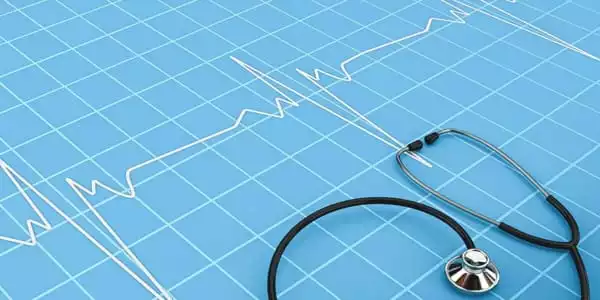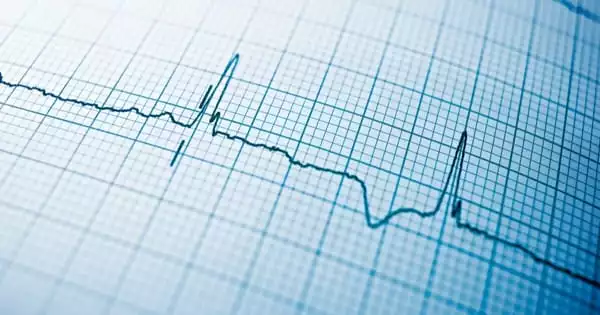Heart attacks can be anticipated months ahead of time by examining the patient’s risk factors, which include hypercholesterolemia, hypertension, diabetes, and cigarette use, as well as obesity, lack of exercise, and high inflammatory markers like CRP. Stress testing, such as treadmill exercise testing, stress echo, multimodal imaging, CT scanning with calcium scores, or angiography, may reveal serious cardiac disease. If this condition is not treated, the patient is more likely to suffer a heart attack.
Many instances, people will experience chest pain syndromes before having a heart attack. If they visit a doctor, this can be identified and treated before a heart attack happens. A lot of research is being done right now to uncover novel indicators that can assist forecast the risk of a heart attack before it happens.
Cedars-Sinai researchers have developed an artificial intelligence-enabled tool that may help forecast whether a person may have a heart attack. The technology, detailed in The Lancet Digital Health, accurately predicted which patients would have a heart attack in the next five years based on the volume and composition of plaque in the arteries that provide blood to the heart.
Heart disease is the major cause of mortality and illness worldwide. Reduced blood flow is a typical symptom of many heart disorders, and it is often curable. As a result, international guidelines propose a variety of evaluations to quantify a patient’s blood flow, although many are invasive and risky.
Coronary plaque is generally not quantified since there isn’t a fully automated technique to do it. When measured by an expert, it takes at least 25 to 30 minutes, but we can now utilize our program to quantify plaque from CTA images in five to six seconds.
Damini Dey
Non-invasive blood flow measurements, such as Cardiovascular Magnetic Resonance (CMR) imaging, are available, however, the scan results have been extremely difficult to analyze precisely enough to provide a prediction or propose treatment.
Plaque buildup can cause arteries to narrow, making it difficult for blood to reach the heart and raising the risk of a heart attack. A coronary computed tomography angiography (CTA) is a diagnostic procedure that takes 3D images of the heart and arteries and can provide doctors an estimate of how much a patient’s arteries have narrowed. Until now, however, there hasn’t been an easy, automatic, or quick technique to quantify the plaque displayed in CTA photos.
“Coronary plaque is generally not quantified since there isn’t a fully automated technique to do it,” said Damini Dey, Ph.D., senior author of the study and director of the quantitative image analysis lab at Cedars-Biomedical Sinai’s Imaging Research Institute. “When measured by an expert, it takes at least 25 to 30 minutes, but we can now utilize our program to quantify plaque from CTA images in five to six seconds.”

Dey and colleagues examined CTA images from 1,196 patients who had a coronary CTA at 11 different locations in Australia, Germany, Japan, Scotland, and the United States. The researchers taught the AI program to measure plaque by allowing it to learn from coronary CTA pictures from 921 people that had already been evaluated by trained doctors.
The method works by defining the coronary arteries in 3D pictures first, then recognizing the blood and plaque deposits within the coronary arteries. The tool’s measurements were found to coincide with plaque quantities seen in coronary CTAs, according to the researchers. They also compared the results to images from two invasive tests that are thought to be extremely accurate in measuring coronary artery plaque and narrowing: intravascular ultrasonography and catheter-based coronary angiography.
By comparing the AI-generated blood flow data to each patient’s health outcomes, the team discovered that patients with lower blood flow were more likely to have bad health outcomes such as mortality, heart attack, stroke, and heart failure. For the first time, the AI technique was proved to be capable of predicting which patients would die or suffer serious adverse effects better than a doctor could using traditional approaches.
Finally, the researchers discovered that measurements obtained by the AI algorithm from CTA pictures successfully predicted heart attack risk within five years for 1,611 patients who participated in the SCOT-HEART experiment, a multicenter investigation.
“More studies are needed, but it’s possible we may be able to predict if and how soon a person is likely to have a heart attack based on the amount and composition of the plaque imaged with this standard test,” said Dey, who is also professor of Biomedical Sciences at Cedars-Sinai.





